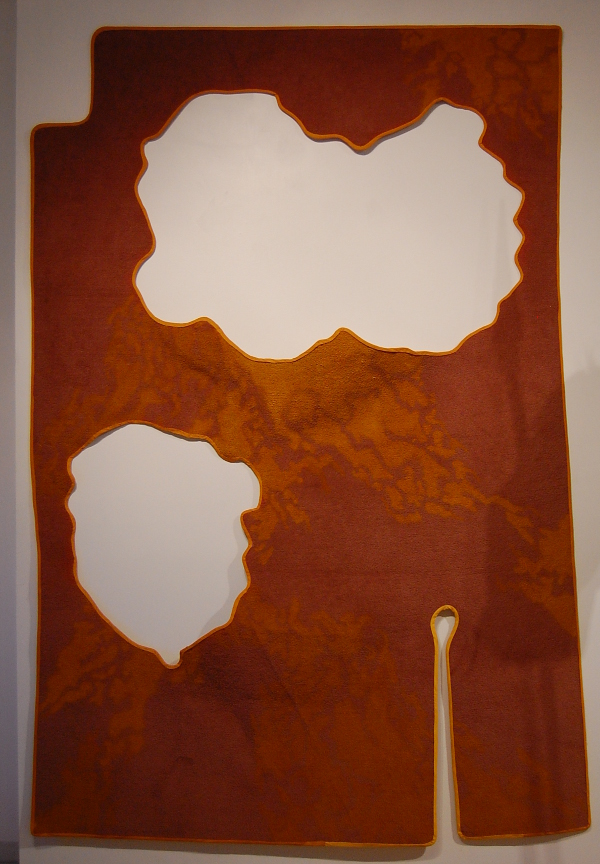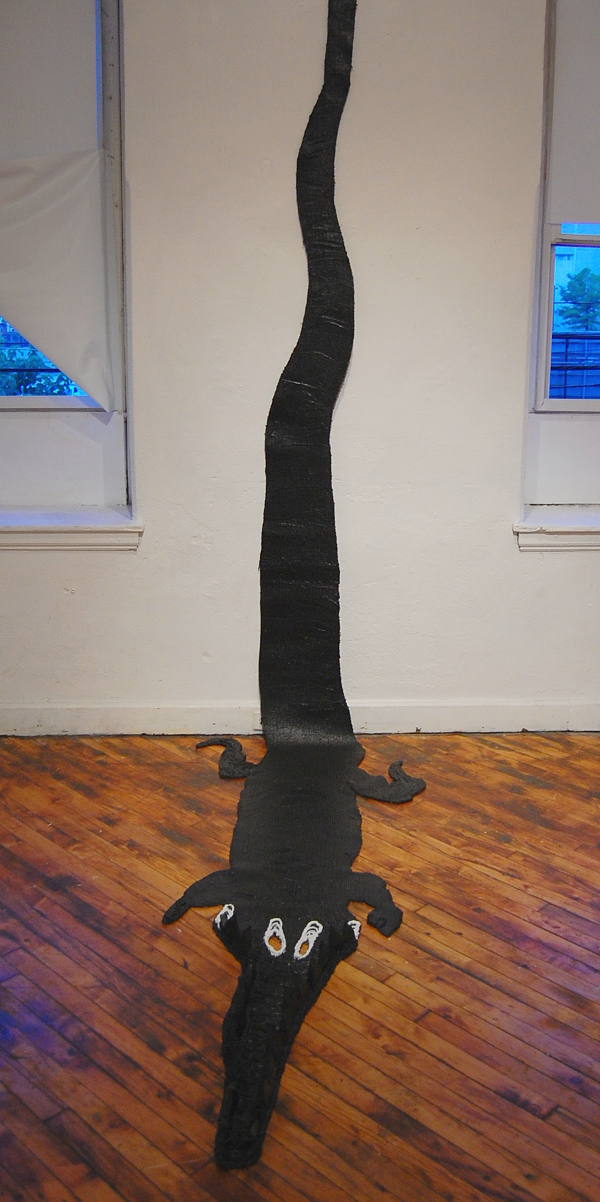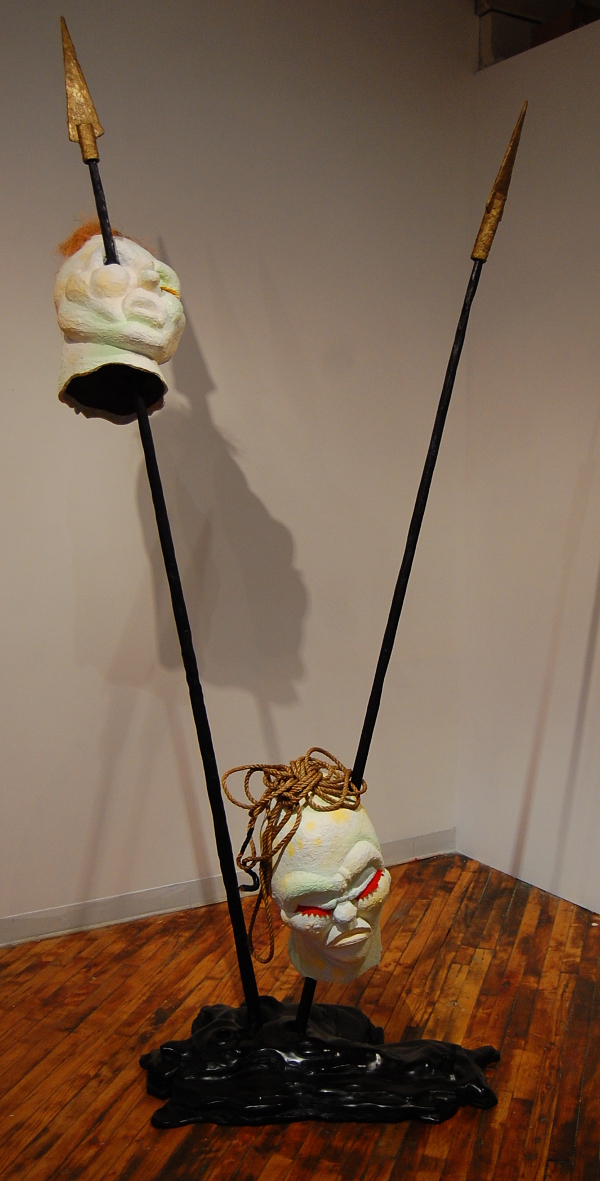
Last of the Neanderthals get reflective in their final moments at Practice
The décor in Practice right now lies somewhere in that indistinct region between The Jetsons and The Flintstones, featuring an anachronistic, plasticine mix of tapestries, tusks, spears and humanoid parts for the show “Hominine.” Most apparent are the pair of heads stuck to said spears toward one corner of the room. While they supposedly represent Neanderthals, the similarity to the image of big-headed extraterrestrials is not exactly a stretch. Placing human beings in a no-man’s land that is neither hunter-gatherer nor interstellar traveler, artist Andrew Brehm emphasizes our unique situation as a species to draw attention to both the gravity and absurdity of our condition.
One wall is covered in a sideways arch-shaped shag rug with a remotely tie-dye, pastel color scheme. Sticking out from the bottom near the rounded side is a giant tusk or tooth jutting into the space. Like some twisted hybrid of retro style and hunting trophies, the bony appendage could easily double as a handle if this door shape were in a slightly more door-like location. It is both fuzzy and inviting, yet potentially hazardous. Adding a literal snag to its otherwise plush surface seems somewhat like a trap, but for whom?
The cutout wall hanging more resembles an auto mat than a tapestry.
Across the way, another tapestry hangs with four cutout areas missing from its otherwise rectangular shape. Two holes look like the outline of clouds or possibly rocks, while the third is more like a keyhole or an opening for a gearshift. The final notch missing from the top left makes the whole thing seem like the mat for the floor of a car, lending some credence to the shifting slot. Nearby, a very synthetic looking, rubbery alligator ‘skin’ slinks its way down from the wall and onto the ground.
A rubbery, black ‘alligator’ skin slinks down onto the floor.
Certainly, each of these flat objects resembles an animal hide of sorts, but they have all gone awry in one way or another. Each of them is flat, textured, and sort of beastly, and they bestow the room with a domestic, yet troubled feeling that permeates the confusing combination of pieces. To add to the uneasiness, let us not forget that pair of skewered heads lingering close at hand.
It is only when Brehm begins his sound performance that the whole thing slowly begins to make sense. A repetitive loop of hand drum sounds and accompaniment overtakes the newly darkened room, and only fades away when lights brighten each of the severed heads, one at a time. It turns out that these disembodied heads are among the last of the neanderthals who are very near to extinction. Probably killed by their Cro-Magnon cousins (who would later become Homo sapiens), the two bicker like a couple about what-ifs and should-haves during their exasperatingly long dying breaths.
Two nearly extinct neanderthal heads spent their final moments bickering.
A male and female voice narrate from each head as the lights illuminate them in turn. Why didn’t we choose better investment strategies? Why didn’t we keep up with the trends (in this case bronze as opposed to stone)? The exchange lampoons the drama and strife of long-term relationships while also highlighting the strange dynamics of modernization and social or technological progress. Are we gearing ourselves up for extinction as well with our superfluous desires? How much do any of our daily worries actually impact us in the end? Is there a way to easily weigh the benefits and drawbacks in our personal relationships?
Brehm concocts the arc of this bizarre tale surrounding two ill-fated hominids in a way that is both unusual and humorous, yet also critical and relevant. While “Hominine” certainly does not go to any lengths to fully explain itself or its various strands of philosophical musing, it does offer a thought-provoking (if meandering) theatrical performance and a range of equally quirky objects that challenge our perceptions and our practices. The show will be on display through August 23.
Practice is located at 319 North 11th St., on the second floor, Philadelphia; [email protected]; practicegallery.org.
Recent Content
-
Artsarticle ·
-
Artsarticle ·
-
Artsarticle ·




